Question 8:
Figure 7 shows an image of water waves moving from a deep water region to a shallow water region.
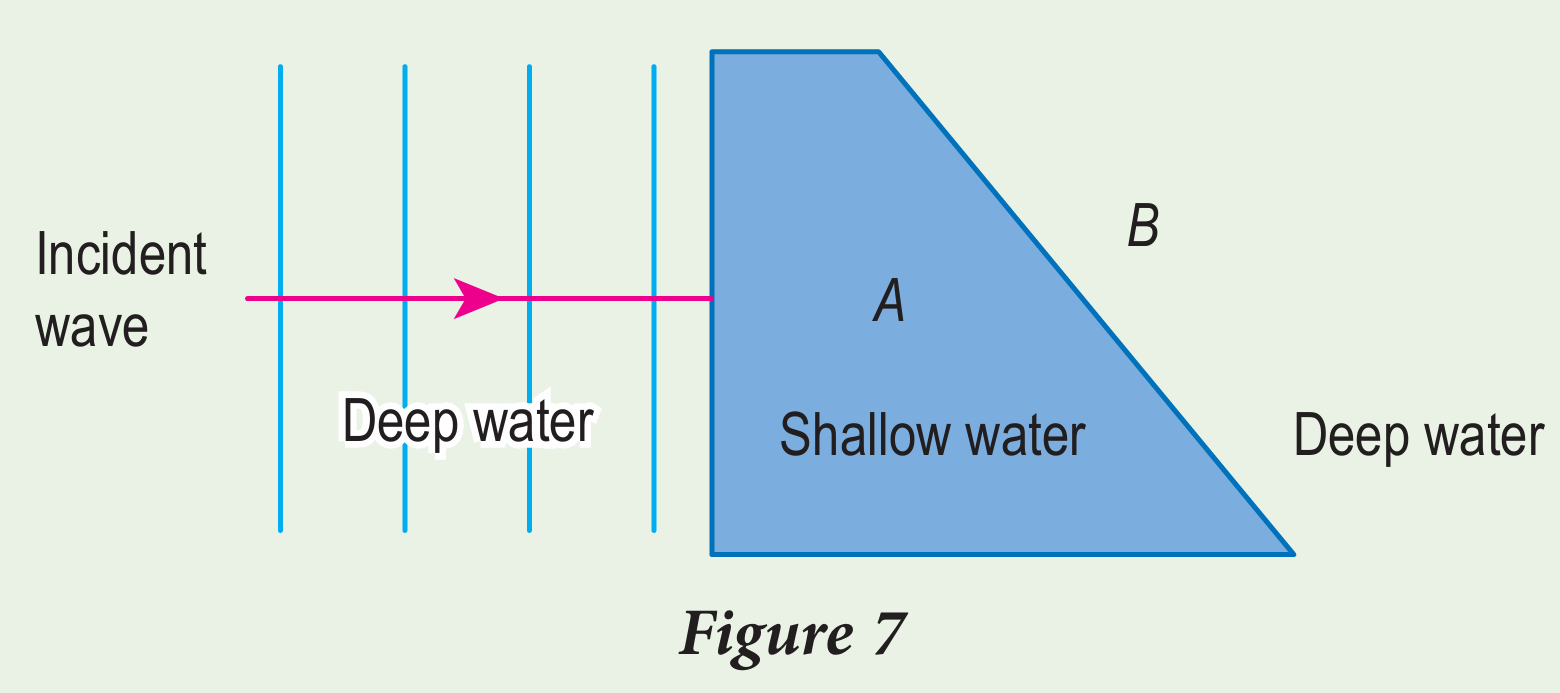
(a) In Figure 7, draw the pattern of wavefront in region A and region B.
(b) Given that the speed of water waves in the shallow water region and deep water region are 4.0 m s–1 and 9.0 m s–1 respectively. Wavelength of water waves in the shallow water region is 2 m. Calculate the wavelength of water waves in the deep water region.
Answer:
(a)
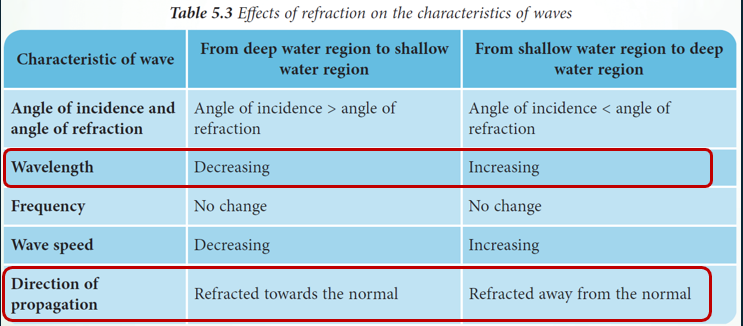
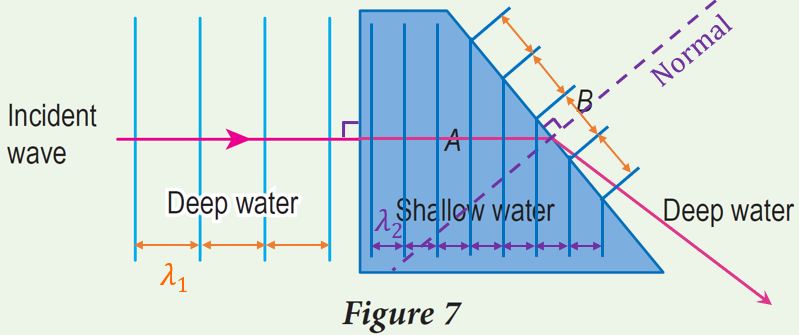
(b)
$$ \begin{aligned} \frac{v_1}{\lambda_1} & =\frac{v_2}{\lambda_2} \\ \frac{4}{2} & =\frac{9}{\lambda_2} \\ \lambda_2 & =\frac{9 \times 2}{4} \\ \lambda_2 & =4.5 \mathrm{~m} \end{aligned} $$
Figure 7 shows an image of water waves moving from a deep water region to a shallow water region.

(a) In Figure 7, draw the pattern of wavefront in region A and region B.
(b) Given that the speed of water waves in the shallow water region and deep water region are 4.0 m s–1 and 9.0 m s–1 respectively. Wavelength of water waves in the shallow water region is 2 m. Calculate the wavelength of water waves in the deep water region.
Answer:
(a)


(b)
$$ \begin{aligned} \frac{v_1}{\lambda_1} & =\frac{v_2}{\lambda_2} \\ \frac{4}{2} & =\frac{9}{\lambda_2} \\ \lambda_2 & =\frac{9 \times 2}{4} \\ \lambda_2 & =4.5 \mathrm{~m} \end{aligned} $$
Question 9:
Figure 8 shows the graph of displacement against time which represents the oscillation of a pendulum.
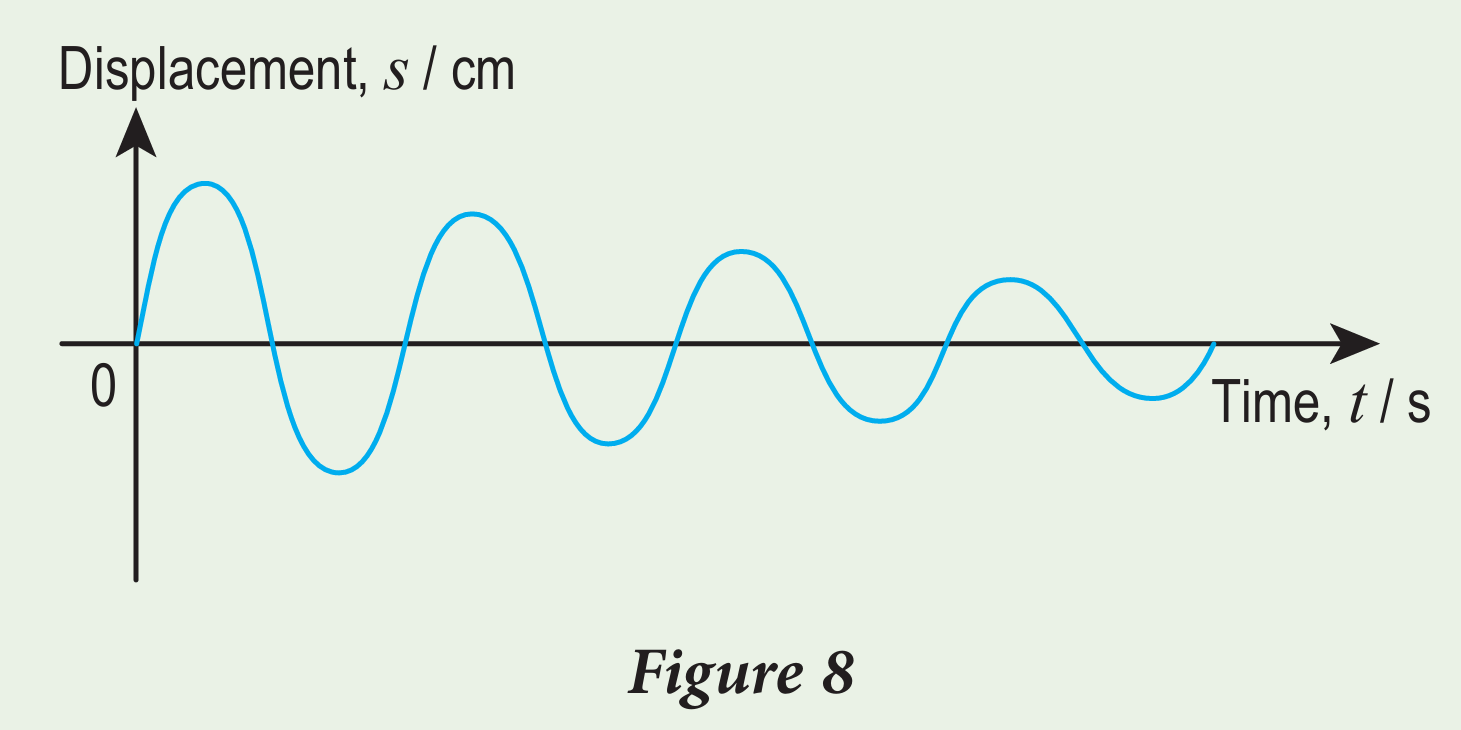
Based on the graph, answer the following questions:
(a) What happens to the amplitude of the oscillating pendulum?
(b) What phenomenon is experienced by the oscillating pendulum?
(c) What is the main reason for the phenomenon?
(d) How is the pendulum able to keep oscillating?
Answer:
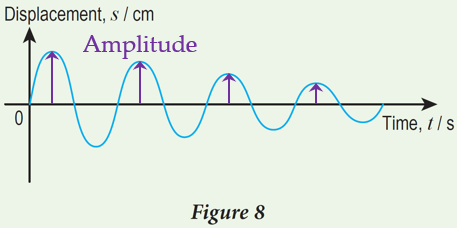
(a) Amplitude decreases
(b) Damping
(c) Air resistance opposes the motion of the pendulum.
(d) Applying periodic force of the same frequency as the natural frequency of the simple pendulum.
Figure 8 shows the graph of displacement against time which represents the oscillation of a pendulum.

Based on the graph, answer the following questions:
(a) What happens to the amplitude of the oscillating pendulum?
(b) What phenomenon is experienced by the oscillating pendulum?
(c) What is the main reason for the phenomenon?
(d) How is the pendulum able to keep oscillating?
Answer:

(a) Amplitude decreases
(b) Damping
(c) Air resistance opposes the motion of the pendulum.
(d) Applying periodic force of the same frequency as the natural frequency of the simple pendulum.
